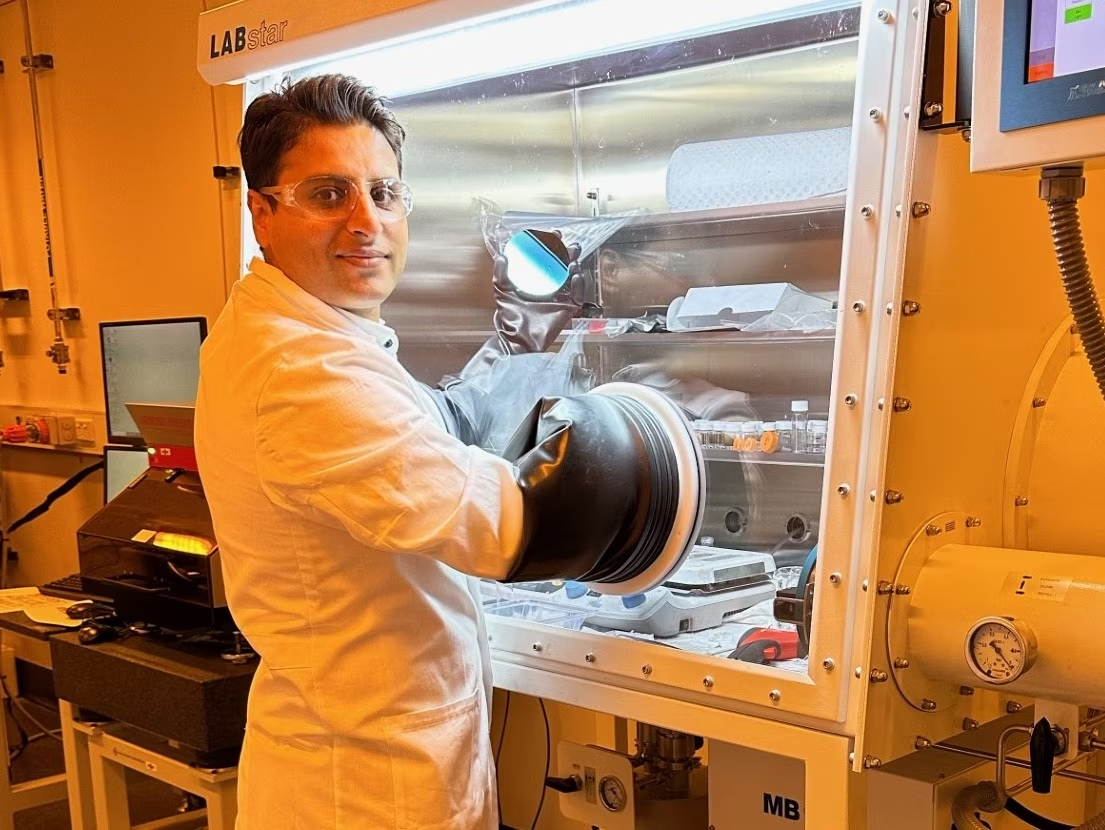A two-dimensional (2D) printing technique utilizing liquid metals has been devised by engineering researchers, which they believe could pave the way for novel methods of producing highly progressive and energy-efficient computing hardware at the nano level.
 Dr Mohammad Ghasemian. Image Credit: University of Sydney
Dr Mohammad Ghasemian. Image Credit: University of Sydney
Given the global surge in demand for memory devices, this process has come at the right time.
Reducing the temperature at which zirconium and hafnium become liquid is crucial to developing lower-cost electrical devices as far less energy is required.
Dr. Mohammad Ghasemian, Study Lead Author, School of Chemical and Biomolecular Engineering, University of Sydney
Developed by the University of Sydney engineers and reported in the journal Small, the team first integrated zirconium, tin, and hafnium in a specific ratio. This allowed the alloy to be melted at temperatures below 500 °C, significantly lower than the individual melting points for hafnium (2227 °C) and zirconium (1855 °C).
The liquid metal alloy comprises a thin oxide layer or "crust" while retaining a liquid center. This alloy is utilized to extract ultra-thin tin oxide nanosheets doped with hafnium zirconium oxide.
Tin is abundant, low cost, and can be used at a large scale for the manufacture of critical semiconductors, transistors, and memory chips. Though hafnium zirconium oxide is a well-known ferroelectric material used in nanoscale applications, like memory devices and sensors, obtaining nanosheets using conventional techniques is both difficult and costly.
Dr. Mohammad Ghasemian, Study Lead Author, School of Chemical and Biomolecular Engineering, University of Sydney
Utilizing the tin-zirconium-hafnium alloy enabled the researchers to extract the ultra-thin tin oxide layer doped with hafnium zirconium oxide through exfoliation, lifting it from the liquid surface. Subsequently, this material could be 2D printed onto a substrate as ferroelectric nanosheets. These nanosheets are engineered to act as the foundation for next-generation computing hardware, including semiconductors and memory chips.
Dr. Ghasemian added, “Think of it like a marble coated in ink,.” The alloy is like a solvent that allows us to remove that ink and then use it for printing. Our process allows us to harvest this precious crust layer and turn it into ultra-thin sheets, which are then used to manufacture electronics.It could be a new source of functional 2D materials which are not accessible by conventional methods. This process allows us to introduce ferroelectricity into much smaller, 2D metal oxides, allowing for the development of next-generation nanoelectronics at low temperatures.”
The scientists declare no external interests. The study was financed by the Australian Research Council Laureate Fellowship Grant Number: FL180100053, the ARC Centre of Excellence FLEET Grant Number: CE170100039, and the ARC Industrial Hub Grant Number: IH210100025.
The authors also acknowledge the resources, facilities, and assistance of Microscopy Australia, the National Computational Infrastructure, UNSW, and the Pawsey Supercomputing Research Centre.
Journal Reference:
Ghasemian, B.M., et al. (2024) Liquid Metal Doping Induced Asymmetry in Two-Dimensional Metal Oxides. Small. doi:10.1002/smll.202309924.